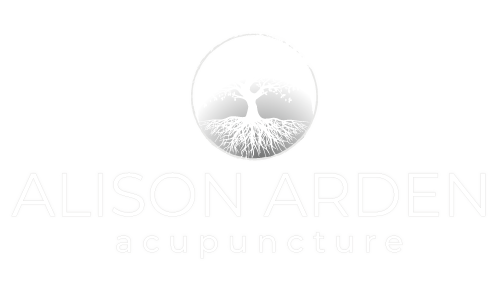This article is designed to focus on what to eat during the second half of the menstrual cycle, giving guidance on foods that help prepare the uterine lining for implantation. The aim here is to choose foods that improve blood flow and circulation (we firstly want a normal blood flow during a period, then good blood flow to the pelvic organs for embryo implantation), reduce inflammation and help balance hormones.
Be mindful that some foods disrupt hormone balance. Culprits of this are trans fats in hydrogenated oils, high caffeine consumption, consuming too much sugar, eating cheaper cuts of meat containing hormones given to animals, eating non-organic food with pesticides and non-organic dairy containing hormones given to animals.
The ideal time to look at dietary changes is three months before trying to conceive. It takes this amount of time to influence egg quality and for men, sperm quality. It’s also a good length of time to improve overall health, the menstrual cycle and get the body nutrient rich, ready to grow a baby. If you haven’t got three months and you’ve already started trying, make these changes today.
One of the best adjustments you can make is to cut out as much processed food (pre-prepared food) as possible. These foods are full of chemicals which are responsible for causing inflammation, hormone imbalances and weight gain. Cook from scratch whenever possible. Check the ingredients on foods and watch out for emulsifiers, chemical-sounding words you don’t recognise, sugars and preservatives. Choose food with very few ingredients. Take a look at all the unnatural ingredients in a typical loaf of bread in the supermarket! If you’re a bread lover, sourdough is a good choice. Avoid food with added oils that cause inflammation such as rapeseed, corn, canola or vegetable oil. Also avoid these oils to cook with and instead use coconut or olive oil. Replace margarine with butter.
So, that all said, let’s go back to our main aims of choosing foods to improve blood flow, reduce inflammation and balance hormones. Not only will this help with the implantation phase in the second half of the cycle, but it will also promote a regular ovulation, a normal period and a healthy body.
The following list highlights just some of the beneficial foods to choose from. Foods containing flavonoids, lycopene, omega 3 and nitrates are particularly useful in improving blood flow and reducing inflammation.
Citrus fruits – thin the blood and help prevent plaque buildup on blood vessel walls, aiding circulation.
Dark chocolate – the natural flavonoids found in dark chocolate promote circulation.
Cayenne pepper – Cayenne pepper has been shown to thin the blood, increase metabolic rate and improve circulation.
Sunflower seeds – these are high in Vitamin E which promotes smooth blood flow. They also contain magnesium which lowers blood pressure. Also, try pumpkin seeds and walnuts for the same effect.
Root ginger – ginger contains the minerals zinc, chromium and magnesium which are known to increase blood flow. Ginger also contains biochemicals that reduce inflammation.
Garlic – garlic cleanses the blood, helps to prevent a build-up of plaque and offers anti-inflammatory benefits. Onions and leeks also stimulate blood flow.
Ginkgo Biloba – available as a supplement, it helps dilate blood vessels to increase blood flow.
Leafy greens – such as cavalo nero thin the blood and help oxygen to circulate around the body more effectively.
Watermelons – these are rich in an antioxidant called Lycopene which aids circulation. Other foods containing lycopene include tomatoes, pink grapefruit, grapes, cranberries and apricots.
Salmon and avocados – both of these contain omega 3 fatty acids which help to increase blood circulation by dilating blood vessels. Omega 3 has also been shown to reduce inflammation in the body.
Beetroot – beetroot contains chemicals called nitrates which are converted into nitric oxide. This chemical improves blood flow and blood pressure.
Foods to help balance hormones:
The sex hormones oestrogen and progesterone are greatly influenced by what we eat. During the first half of your cycle, oestrogen is the predominant hormone and is necessary for repairing and preparing the uterine lining for pregnancy. Healthy levels of oestrogen are also required for normal ovulation to occur. Oestrogen likes good fats and blood sugar to be low. During the second half of your cycle, progesterone is the dominant hormone, responsible for maintaining the uterine lining in anticipation of an embryo implantation.
Progesterone likes blood sugar to be slightly higher. This is the reason you start craving chocolate around the week before your period! So foods to support progesterone will be higher in the naturally sweet range. Add to your diet some root vegetables, cruciferous vegetables, tropical fruits, citrus fruits, legumes (such as chickpeas, kidney beans, lentils) and seeds (such as flax, pumpkin and sesame). Also add spinach, avocados, bananas, dark chocolate (over 70% cocoa), brussel sprouts, eggs, oily fish, oats, cabbage and cauliflower.
Final word, it’s ok to have a little of what you fancy! Try following the 80/20 rule to keep life feeling fun and balanced as you try to conceive. Eat as well as you can for 80% of the time and have a few treats now and then. These positive eating habits need to be sustained in the longer term and it’s very hard to do that when we feel deprived.
Articles and Research:
Alternative_Therapies_in_Health_and_Medi.pdf (d1wqtxts1xzle7.cloudfront.net)
Beneficial Effects of Citrus Flavonoids on Cardiovascular and Metabolic Health – PMC (nih.gov)
9 Impressive Health Benefits of Beets (healthline.com)
The Health Benefits of Watermelon: Nutrition, Facts, Safety (verywellhealth.com)
Dark Chocolate and Blood Flow | Food & Nutrition Education Lab (udel.edu)
Effect of Ginger on Inflammatory Diseases – PMC (nih.gov)
Omega-3 fatty acids in inflammation and autoimmune diseases – PubMed (nih.gov)

